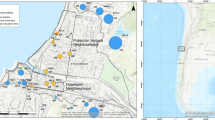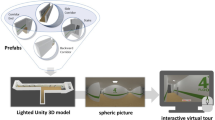Abstract
Modelling people behaviour during emergencies has become an essential issue in attempting to increase safety aspects in buildings. This paper evaluates people’s choice behaviour for evacuation of tall buildings. A Stated Preference (SP) questionnaire was designed to understand underlying factors behind people behaviour and predict the likelihood of selecting evacuation lifts as opposed to stairs. Various scenarios including six different navigational cases, three levels for the density of people on stairs, three different number of people in the lift lobby and three vertical positions for refuge floors were administrated to 566 participants. A mixed logit model approach was then used to investigate how those factors influence the occupant’s decision-making as well as to capture the heterogeneity of different preferences among people. Traditionally, lifts were not allowed to be used in case of emergency, but the results indicate that people would tend to choose evacuation lifts in situations when they are suggested as the main exit option, and situations when stairs are overcrowded. Thus, if people are navigated by dynamic signs to use evacuation lifts, the percentage of lift users could go approximately from 70% to 80% for refuge floors between 15 and 55, respectively. In contrast, in situations when people have to make a decision between using lifts or stairs to evacuate, stairwells with fewer people as well as overcrowded refuge floors could lead to a decision in favour of stairs. This study represents the first SP experiment combining people decisions, pre-event opinions and beliefs related to evacuation lifts and stairs to understand their route choices for evacuation from tall buildings. The findings of this study can be used in the development of behavioural models for evacuation simulations of tall buildings.








Similar content being viewed by others
References
Tubbs J, Meacham B (2009) Selecting appropriate evacuation strategies for super tall buildings: current challenges and needs. In: Proceedings of the 4th international symposium on human behaviour in fire. Robinson College, Cambridge, pp 41–50
Luo M, Wong KHL (2006) Evacuation strategy for super highrise buildings. In: 5th annual seminar tall building construction and maintenance. Hong Kong
Bukowski RW (2008) Emergency egress from ultra tall buildings. In: Tall & green, typology for a sustainable urban future, CTBUH, Dubai, p 9
Bukowski RW, Tubbs JS (2016) Egress concepts and design approaches BT. In: Hurley MJ, Gottuk DT, Hall Jr. JR, Harada K, Kuligowski ED, Puchovsky M, Torero JL, Watts Jr. JM, Wieczorek CJ (eds) SFPE handbook of fire protection engineering. Springer, New York, pp 2012–2046
Ronchi E, Nilsson D (2013) Fire evacuation in high-rise buildings: a review of human behaviour and modelling research. Fire Sci Rev 2(1):1–21
Kinateder MT, Omori H, Kuligowski ED (2014) The use of elevators for evacuation in fire emergencies in international buildings, pp 1–29
Clawson K, O’Connor DJ (2011) Considerations and challenges for refuge areas in tall buildings. In: CTBUH 2011 world conference, pp 332–338
Barber D, Johnson P (2015) Refuge floors—history, implementation and methods for improvement. In: Human behaviour in fire proceedings of the 6th international symposium, pp 245–256
Ariff A (2003) Review of evacuation procedures for petronas twin towers. In: CIB-CTBUH international conference on tall buildings. CIB Publication no: 290, Kuala Lumpur
Kuligowski ED (2016) Human behavior in fire. In: Hurley MJ, Gottuk DT, Hall JR, Harada K, Kuligowski ED, Puchovsky M, Torer JL, Watts JM, Wieczorek CJ (eds) SFPE handbook of fire protection engineering. Springer, New York, NY, pp 2070–2114
Slovic P, Fischhoff B, Lichtenstein S (1977) Behavioral decision theory. Annu Rev Psychol 28(1):1–39
Lovreglio R (2016) Modelling decision-making in fire evacuation using random utility theory. Politecnico di Bari, Milano
Zakay D (1993) The impact of time perception processes on decision making under time stress. In: Svenson O, Maule AJ (eds) Time pressure and stress in human judgment and decision making. Springer, Boston, MA, pp 59–72
Ben Zur H, Breznitz SJ (1981) The effect of time pressure on risky choice behavior. Acta Psychol (Amst) 47(2):89–104
Averill JD, Mileti DS, Peacock RD, Kuligowski ED, Groner N, Proulx G, Reneke AP (2005) Final report on the collapse of the World Trade Center towers. Federal building and fire safety investigation of the World Trade Center disaster, occupant behaviour. Egress and emergency communications. September. NIST NCSTAR 1–7. National Institute of St
Lovreglio R (2016) Modelling decision-making in fire evacuation based on random utility theory. PhD Dissertation Politecnico of Bari, Milan and Turin
Lovreglio R, Borri D, Ronchi E, Fonzone A, Dell’Olio L (2015) The need of latent variables for modelling decision-making in evacuation simulations. In: Proceedings of the IX international workshop on planning and evaluation, Bari
Train K (2003) Discrete choice methods with simulation. Cambridge University Press, Cambridge
McFadden D, Train K (2000) Mixed MNL models for discrete response. J Appl Econ 15(5):447–470
Ben-Akiva M, Boccara B (1995) Discrete choice models with latent choice sets. Int J Res Mark 12(1):9–24
Small KA, Rosen HS (1981) Applied welfare economics with discrete choice models. Econ J Econ Soc 49(1):105–130
Ben-Akiva ME, Lerman SR (1985) Discrete choice analysis: theory and application to travel demand, vol 9. MIT Press, Cambridge
Bhat CR (2003) Simulation estimation of mixed discrete choice models using randomized and scrambled Halton sequences. Transp Res Part B Methodol 37(9):837–855
Lovreglio R, Borri D, Dell’Olio L, Ibeas A (2014) A discrete choice model based on random utilities for exit choice in emergency evacuations. Saf Sci 62:418–426
Lovreglio R, Fonzone A, Dell’Olio L (2016) A mixed logit model for predicting exit choice during building evacuations. Transp Res Part A 92:59–75
Lovreglio R, Fonzone A, Dell’Olio L, Borri D (2016) A study of herding behaviour in exit choice during emergencies based on random utility theory. Saf Sci 82:421–431
Haghani M, Sarvi M, Shahhoseini Z (2015) Accommodating taste heterogeneity and desired substitution pattern in exit choices of pedestrian crowd evacuees using a mixed nested logit model. J Choice Model 16:58–68
Haghani M, Sarvi M (2017) Stated and revealed exit choices of pedestrian crowd evacuees. Transp Res Part B Methodol 95:238–259
Kinsey MJ, Galea ER, Lawrence PJ (2011) Stairs or lifts?—a study of human factors associated with lift/elevator usage during evacuations using an online survey. In: Pedestrian and evacuation dynamics. Springer, Boston, MA, pp 627–636
Andrée K, Daniel N, Joakim E (2015) Evacuation experiments in a virtual reality high-rise building: exit choice and waiting time for evacuation elevators. Fire Mater 40(4):554–567
Galea ER, Hulse L, Day R, Siddiqui A, Sharp G (2012) The UK WTC 9/11 evacuation study: an overview of findings derived from first‐hand interview data and computer modelling. Fire Mater 36(5–6):501–521
Ding N, Chen T, Zhang H (2016) Experimental study of elevator loading and unloading time during evacuation in high-rise buildings. Fire Technol 53(1):1–14
Dell’Olio L, Ibeas A, Cecin P (2011) The quality of service desired by public transport users. Transp Policy 18(1):217–227
Australian Building Codes Board (2013) Lifts used during evacuation, no. 2013
NFPA (2012) NFPA 101 life safety code. National Fire Protection Association, Quincy
Aloi S, Rogers J (2001) Evacuation and life safety strategies for super high rise buildings. In: Building for the 21st century: technology, livability, productivity, pp 429–436
Gwynne SMV, Boyce KE, Kuligowski ED, Nilsson D, Robbins A, Lovrelgio R (2016) Pros and cons of egress drills. In: Interflam 2016, 14th international conference on fire science and engineering
Notarianni KA, Parry GW (2016) Uncertainty. In: Hurley MJ, Gottuk DT, Hall JR, Harada K, Kuligowski ED, Puchovsky M, Torer JL, Watts JM, Wieczorek CJ (eds) SFPE handbook of fire protection engineering. Springer, New York, NY, pp 2992–3047
McGuire WJ (1969) The nature of attitudes and attitude change. Handb Soc Psychol 3(2):136–314
Hovland CI, Janis IL, Kelley HH (1953) Communication and persuasion; psychological studies of opinion change. Yale University Press, New Haven
Pathfinder Thunderhead (2017) Technical reference
Hanemann M, Loomis J, Kanninen B (1991) Statistical efficiency of double-bounded dichotomous choice contingent valuation. Am J Agric Econ 73(4):1255–1263
Cai Y, Deilami I, Train K (1998) Customer retention in a competitive power market: analysis of a ‘double-bounded plus follow-ups’ questionnaire. Energy J, 19(2):191–215
Kinateder M (2013) Social influence in emergency situations–studies in virtual reality. Phd Dissertation University of Wuerzburg
Kuligowski ED (2016) Computer evacuation models for buildings. In: SFPE handbook of fire protection engineering. Springer, pp 2152–2180
Train K (2000) Halton sequences for mixed logit. Department of Economics, UCB, Berkeley
Train K, Croissant Y (2012) Kenneth Train’s exercises using the mlogit package for R. R 25:2
Neyman J, Pearson ES (1933) On the problem of the most efficient tests of statistical hypotheses. Biometrika A 20:175–240
Author information
Authors and Affiliations
Corresponding author
Rights and permissions
About this article
Cite this article
Aleksandrov, M., Rajabifard, A., Kalantari, M. et al. People Choice Modelling for Evacuation of Tall Buildings. Fire Technol 54, 1171–1193 (2018). https://doi.org/10.1007/s10694-018-0731-1
Received:
Accepted:
Published:
Issue Date:
DOI: https://doi.org/10.1007/s10694-018-0731-1




